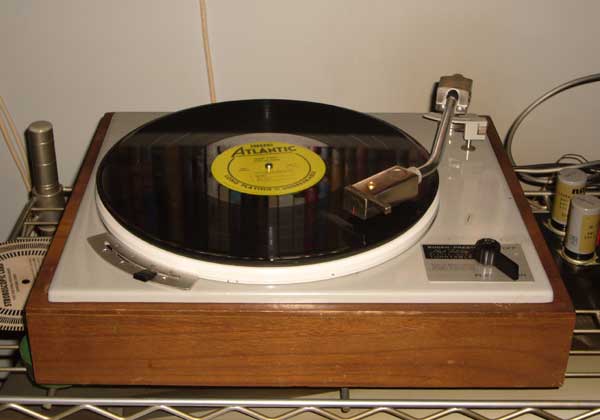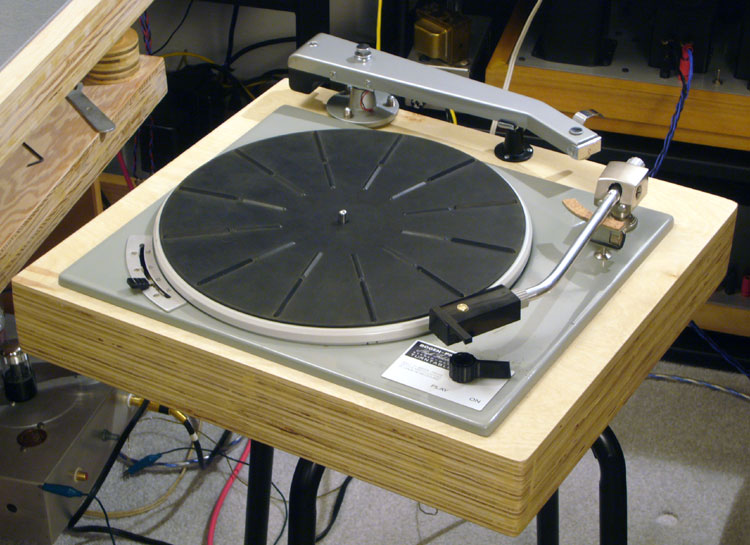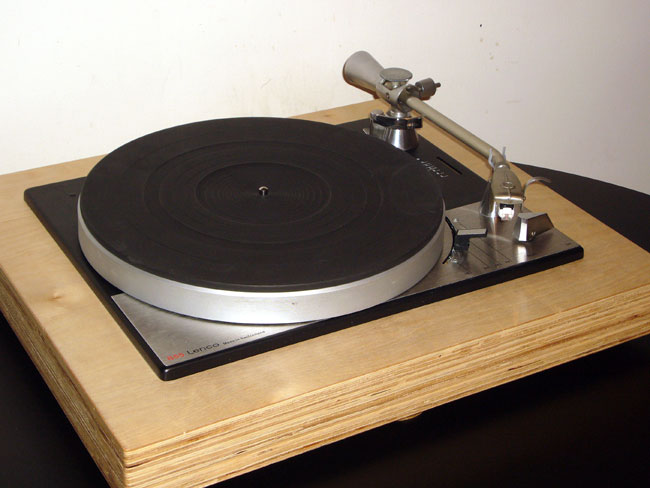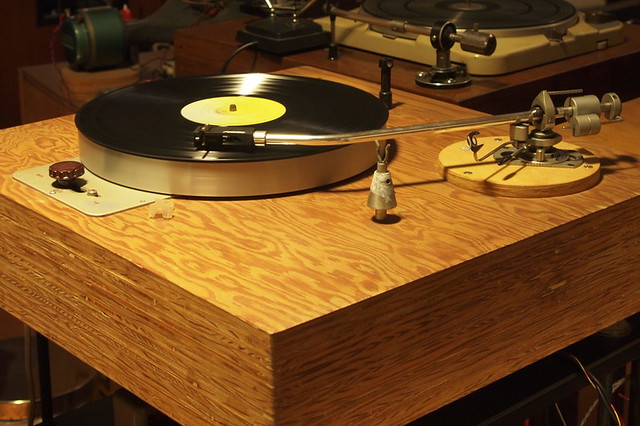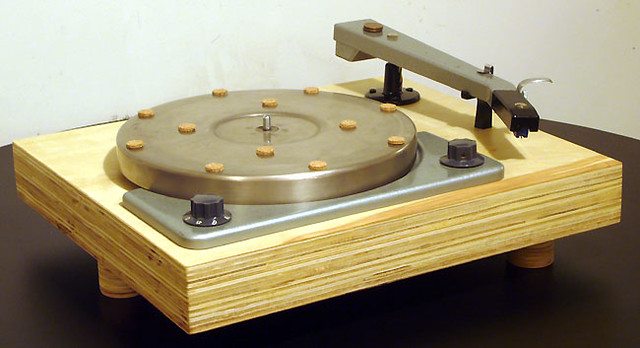Revisiting the classic pentode driver
Radiotron's answer to the WE91A
Right before the end of the 20th century, a friend brought over a Japanese built pair of WE91A clones sporting top of the line Tango X-3.5S output transformers, matching chokes and power transformers, input tubes were original WE310As and 50s date code WE 300Bs, WE274B rectifiers, Allen-Bradley carbon and NOS wire wound resistors, Vitamin Qs for coupling and can type paper in oil caps for the power supply. The amp was huge easily dwarfing my JEL SE300Bdx monoblocks and the quality of construction and wiring was impeccable. Although this WE91A clone had great qualities in the midrange my friend was convinced my amps sounded better overall. Does that mean my amp design is absolutely better? Definitely not! Only in the context of my system - Denon DL103R/SME 3012/Garrard 301 feeding Tamura TKS83 MC transformers into a JEL deluxe preamp, JEL SE300Bdx mono blocks driving a pair of Altec 755As in open baffles - since I optimized the signal chain so that it sounds good according to my standards. I told my friend that his decision to purchase those amps should be based on how it sounds in his system not on what he heard in my listening room.
That amp made a lasting impression and reinvigorated my interest in the classic pentode driver topology which has a lot of esteemed followers and practitioners. After my friend left that night I pulled out Joe Roberts WE91A article in Sound Practices Issue No. 1, reviewed my notes on the 6SJ7-->300B I briefly prototyped - slight upper midrange glare through the 755As, the top end was a bit rolled off with a tubby bottom. I was thinking....could it be the pentode 6SJ7 being a later compact version that kills the magic? Remember that even in the 90s WE310As were already unobtanium. So I thumb through the pages of the RC-12 tube manual in search for a close equivalent and found the 6SJ7's grandfather, the 6C6 which has similar electrical specifications and bears a physical resemblance (BIG plate and grid cap) to the WE310A. The 6V filament is a convenient bonus. By that time, I've maximized the potential of all my triode input/driver circuits for the 755A/OBs and Altec 2-way. I pursued other interests and kept the 6C6 project in the back burner...

!!!WARNING!!!
The voltages found in this circuit can be lethal, build at your own risk!!!

At the beginning of the year (2007) I was looking for a winter project that will not entail chassis building. I reread Joe Roberts article "I never met a 2A3 amp that I didn't like" SP15 and noticed a familiar looking SE2A3 amp schematic using a 6C6 pentode driver from the Radiotron, 3rd edition. He had good things to say about this circuit and it looked easy to graft this topology on my long-time SE2A3 test mule with Tango U808s. I took inventory of my tube stash and was frustrated to find just a single RCA 6C6, a couple of 6-pin sockets but needed 1/4" medium sized grid caps.
One chilly morning I downloaded an email from an internet buddy Sergey Didkovsky from Ukraine. We have exchanged emails a few years back when he was building the JEL classic 300B circuit. He was telling me about a pentode driven SE amp that he thinks sounds better. This was a fortuitous moment because the clairvoyant Sergey was talking about a Radiotron derivative. In the course of our correspondence he pointed out a quick source for additional 6C6s and grid caps with several links and attachments of Japanese and European DIYers' single pentode driver stage schematics including tips on operating points and parts tweaks.
I started my listening evaluation with this circuit and sent my impressions to Sergey for comments:
"Try please, to a little increase the cathode resistor (up to 1,2-1,5Kohm) and reduce anode resistor (to 75k-82k). It will allow to increase Ua up to 150V and to receive ratio Ua:Ug2 = 2:1 ratio. The sound should become more "interesting and old". That is especially good for jazz. Still mine 5 cents....use good NOS Oil capacitors in G2 circuit. I use TCC Visconol. I think, oil caps in the grid - adds a bass. Reduction of the anode resistor - improves the hi range a little."
His use of adjectives "interesting and old" prompted me to get as close to the suggested 2:1 plate to screen grid suppressor voltage ratio as it seems to be a key ingredient for his recipe. So far I have achieved a 1.8:1 ratio and was still hearing a slight upper midrange glare that I originally attributed to the 6SJ7 years ago. The BIG plate = FAT midrange I was expecting from the 6C6 was already there but the glare did not disappear until I replaced the plastic 2uf cap with can type 2.8uf paper in oil caps for the screen grid (suppressor) and as Sergey said it did improve the bass. Maybe the paper in oil decoupling cap will give the same results with the 6SJ7....
"Thanks for your patience, not looking at my very bad English language...."
There is a saying that music is a universal language, Sergey apologized about his English but I assured him that his communication skills were fine. Certainly driven by his passion for good sound, I had no problems understanding his tips and it was quite evident that he has done some serious research, listening and is blessed with good ears!
With these thoughts in mind I did not argue and simply looked up to him as a mentor. In this revised circuit I captured the 2:1 ratio, to be exact 1.98:1 with 152V on the plate drawing about 1.8ma. of current. I changed the grid resistor from a 270k to 330k because not only does this make an easier load for the driver stage but from experience the sound becomes warmer as the grid resistor value is increased but only to a certain extent. If you exceed the maximum 500k grid resistor value specified in the tube manual for a 2A3 you might find the plates running away cherry red! So check your tube manual before messing around with this tweak on other triodes. A 220k will give more focus and detail but lower than that value the driver stage will have limited headroom. It will clip prematurely from not having enough voltage swing to drive the 2A3 to a full 3.5W output since the grid resistor is effectively in parallel with the plate load resistor.
 |
| Radiotron SE2A3 Power Supply |
I am grateful to Sergey for sharing his experience saving me time and effort to build a classic pentode driven SE2A3 amp!
 |
| 100Hz - both channels |
 |
| 1kHz - both channels |
 |
| 10kHz - both channels |
Radiotron derived SE2A3 - 6C6 pentode driver, Tango U808
Power output = 3.8W per channel before clipping
Frequency response = +/- 1dB from 30hz - 15khz @ 1W
( - 3dB @ 20hz & - 5dB @ 20khz)
 |
| 100Hz - top trace = signal generator |
 |
| 1kHz - top trace = signal generator |
 |
| 10kHz = top trace = signal generator |
JEL SE2A3dx - 76/6SN7 input/driver, Tango U808
Power output = 4.5W per channel before clipping
Frequency response = +/- .5dB from 20hz-20khz @ 1W
( - 3dB @ 50khz)
 |
| 100Hz - both channels |
 |
| 1kHz - both channels |
 |
| 10kHz - both channels |
JEL Simple 45 - 1/2 6SL7 [or 6SF5], Tamura F475
Power output = 2W per channel before clipping
Frequency response = +/- 1dB 20hz-20khz @ 1W
(- 5dB @ 30khz)
Compared to my favorite topologies in driving power triodes, this R-C coupled 6C6 pentode has slightly narrower bandwidth and as shown in the square waves, it has the slowest rise time and softest leading edge at 1khz and 10khz (in theory a more vertical rise time and sharper leading edge = faster transients and better high frequency extension) and pretty much equal at 100hz (less tilt = better bass response) with the Simple 45 having a slight edge but that uses a different OPT. To put things in perspective a 30hz-15khz +/- 1dB bandwidth is not a slouch if you refer to the table below.
I believe that good engineering aided by good ears is an important factor in building a musical sounding amplifier and cannot forget a post I read several years ago at a forum "...nice people build good sounding amps, bad sounding amps are designed by annoying ---..." and so it goes...kudos to the RCA engineer(s) in the 1930s who designed the Radiotron SE2A3, it is a musical amp!











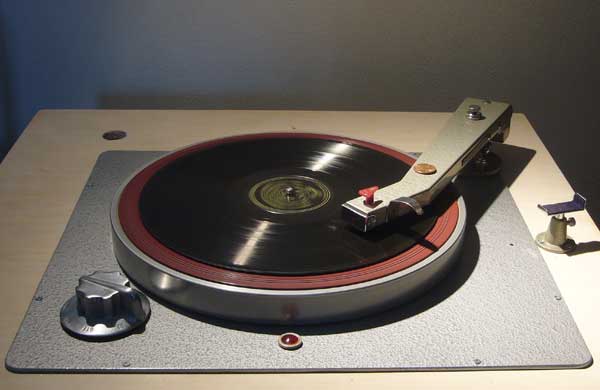
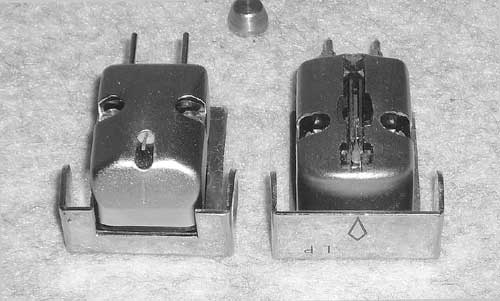
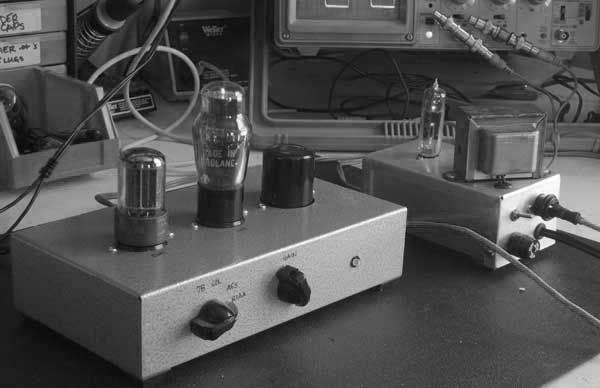
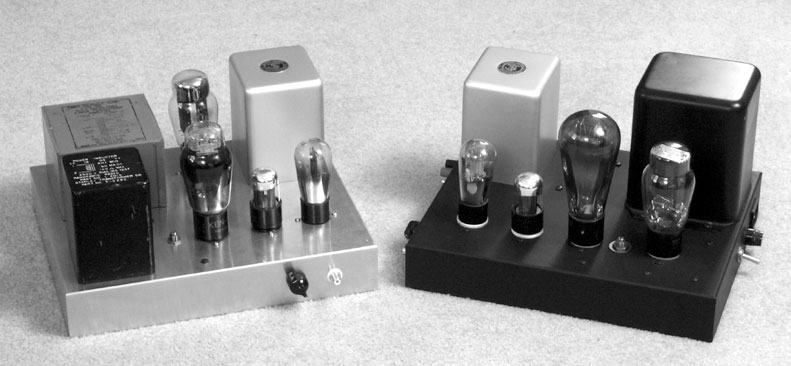





















a.jpg)
